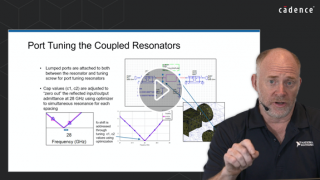Designing a Narrowband 28-GHz Bandpass Filter for 5G Applications

5G represents the next milestone in mobile communications, targeting more traffic, increased capacity, reduced latency, and lower energy consumption than its predecessors. To achieve these goals, networks will need to increase bandwidths through carrier aggregation and a push into millimeter-wave spectrum, all while improving spatial efficiency with base station densification and massive multiple-in-multiple-out (MIMO) and beam-forming antenna arrays. These enabling technologies will place new demands on the underlying RF front-end components, particularly the vast number of filter designs required across a heterogeneous network of base stations (of varied cell sizes) and mobile devices. This presentation takes a look at the filter design challenges brought on by adopting these new technologies and the factors driving the physical, electrical, and cost restraints for 5G filters, as well as the supporting simulation technology that will help designers physically realize these components.
Presented by: David Vye, Cadence